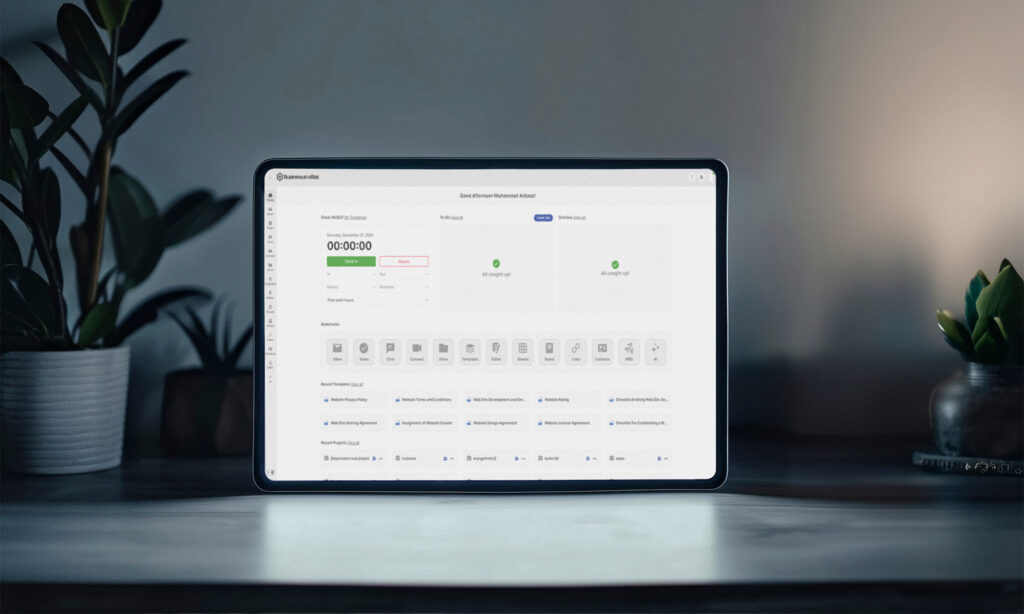Introduction
Every entrepreneur starts with a dream — but without clear goals, even the best dreams drift off course.
Setting SMART goals (Specific, Measurable, Achievable, Relevant, and Time-bound) helps you turn ambition into action.
Whether you’re leading a small team or managing multiple departments, SMART goals give you clarity, focus, and a roadmap to success.
In this article, we’ll break down the SMART framework, provide real examples, and show how to track and achieve your goals using Business in a Box.
Why SMART Goals Work
Vague goals like “increase sales” or “grow my business” don’t provide direction.
SMART goals, on the other hand, define exactly what needs to happen, how to measure it, and when to get it done.
This framework:
- Creates accountability
- Improves time management
- Aligns your team around common objectives
- Makes performance measurable
The SMART Framework
| Letter | Meaning | Example |
| S | Specific | Increase monthly sales by acquiring 20 new clients |
| M | Measurable | Track performance using CRM metrics |
| A | Achievable | Realistic based on current capacity |
| R | Relevant | Directly supports company growth goals |
| T | Time-bound | Achieve target within 90 days |
Step-by-Step: How to Set SMART Goals
- Start with Your Vision
Before you can define goals, you must know where you’re going.
Review your mission, vision, and values (see Article #5) to make sure your goals align with your company’s long-term direction.
Business in a Box includes templates for vision and goal alignment that help teams link objectives to strategy.
- Identify Key Business Areas
Set SMART goals across these categories:
- Revenue & sales
- Marketing & lead generation
- Operations efficiency
- Customer satisfaction
- Team productivity
Focus on no more than 3–5 strategic goals per quarter.
- Make Each Goal Specific
Replace vague intentions with concrete outcomes.
Instead of “increase revenue,” try:
“Increase average monthly revenue from $50K to $65K by Q3.”
- Quantify the Metrics
Define how success will be measured.
Examples:
- % increase in leads
- of customers retained
- $ in recurring revenue
- % improvement in on-time delivery
Use the Goal Tracker Template inside Business in a Box to measure progress automatically.
- Keep It Achievable
Ambition drives progress, but unrealistic goals kill motivation.
Review your resources — time, team, and budget — before committing.
A good rule: aim for 70–80% stretch beyond current performance.
- Ensure Relevance
Ask:
- Does this goal support our main mission?
- Will it drive measurable business growth?
- Is it aligned with our priorities this quarter?
SMART goals must serve your bigger strategy, not distract from it.
- Make It Time-Bound
Deadlines create momentum.
Assign a clear timeline to every goal and schedule progress checkpoints.
Example:
“Launch new product line by July 1st, with a marketing campaign starting June 15th.”
Common Mistakes to Avoid
- Setting too many goals at once
- Skipping progress reviews
- Failing to assign ownership
- Using unclear metrics
- Forgetting to celebrate milestones
Tracking Your Goals Effectively
Business in a Box helps you track goals across your entire organization:
- Assign tasks and owners
- Attach relevant templates and documents
- Set deadlines
- Monitor KPIs and completion rates
The result: every goal becomes visible, measurable, and achievable.
SMART Goal Examples
| Goal | SMART Version |
| Grow sales | Increase sales by 15% in 90 days by launching a new referral program |
| Improve retention | Reduce customer churn from 10% to 6% within 6 months |
| Boost productivity | Automate repetitive admin tasks by 30% using Business in a Box by Q2 |
Conclusion
SMART goals transform abstract dreams into concrete results.
They keep your team focused, accountable, and aligned — especially when supported by the right system.
Download the SMART Goals Template Pack from Business in a Box and start turning ambition into achievement — one goal at a time.







